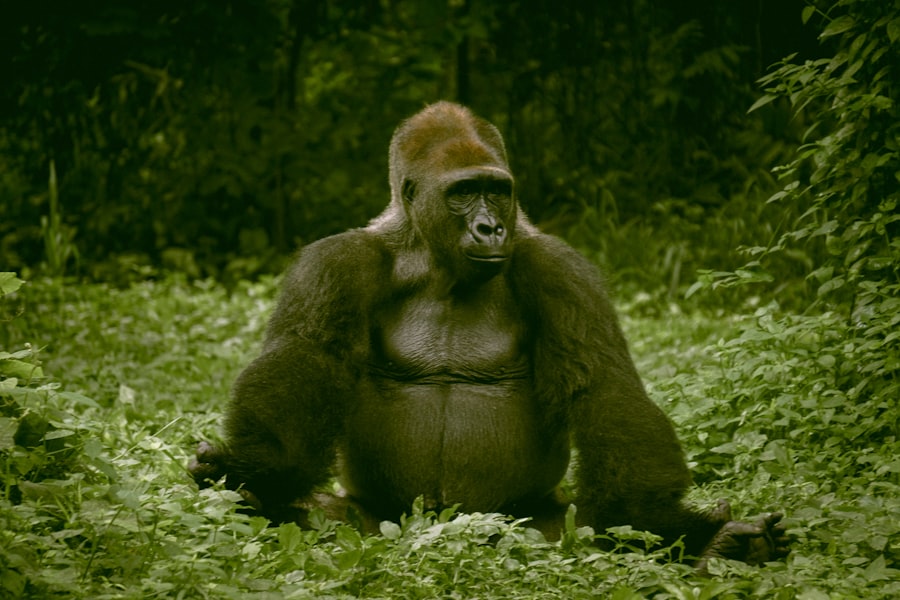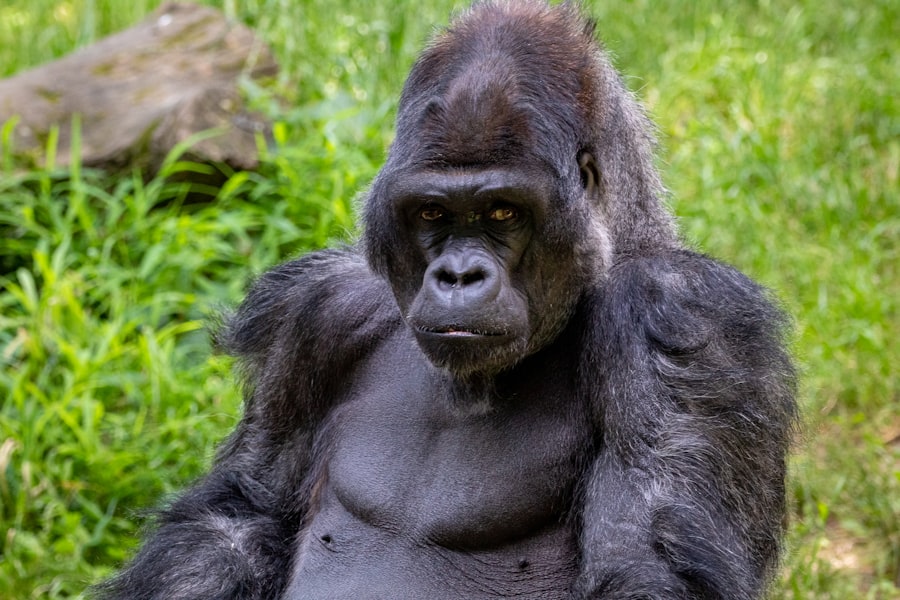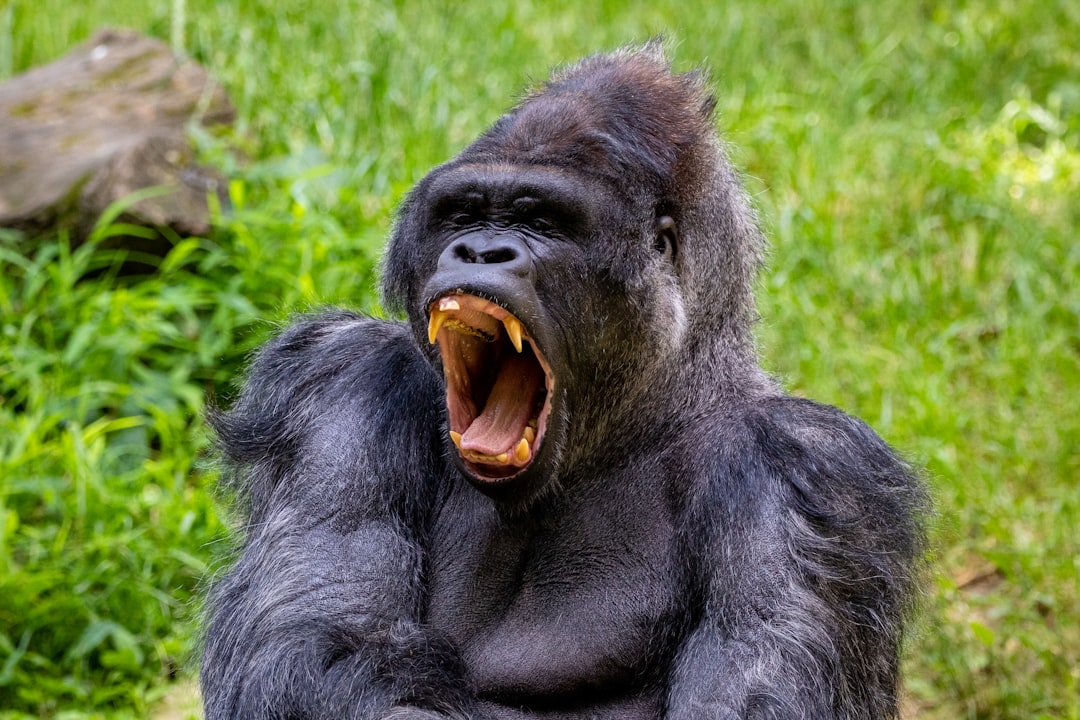Mountain gorillas (Gorilla beringei beringei) are one of the most captivating and endangered species on the planet. These magnificent creatures inhabit the dense forests and volcanic mountains of East Africa, primarily found in the Virunga Massif, which spans across Rwanda, Uganda, and the Democratic Republic of Congo. Unlike their lowland counterparts, mountain gorillas are adapted to cooler climates and higher altitudes, which is reflected in their thicker fur and robust body structure.
They are social animals that live in groups known as troops, typically led by a dominant silverback male.
The conservation status of mountain gorillas is a poignant narrative of resilience.
Once teetering on the brink of extinction due to habitat loss, poaching, and disease, concerted conservation efforts have led to a remarkable increase in their population over the past few decades. As of the latest estimates, there are approximately 1,063 mountain gorillas left in the wild, a testament to the effectiveness of community-based conservation initiatives and ecotourism. These efforts not only protect the gorillas but also empower local communities by providing them with sustainable livelihoods through tourism.
Understanding the biology, behavior, and conservation status of mountain gorillas is essential for anyone looking to engage with these incredible animals responsibly.
Key Takeaways
- Mountain gorillas are an endangered species found in the forests of Central Africa, known for their gentle nature and close-knit family groups.
- When choosing a destination to see mountain gorillas, consider factors such as accessibility, accommodation options, and the overall experience offered by the location.
- Booking a permit in advance is essential for gorilla trekking, as there are limited permits available each day to minimize the impact on the gorillas and their habitat.
- Hiring a local guide is not only a requirement for gorilla trekking but also enhances the experience by providing valuable insights and ensuring safety in the forest.
- It is important to follow the rules and regulations set by the park authorities, such as maintaining a safe distance from the gorillas and minimizing noise and movement during the encounter.
Choosing the Right Destination
Volcanoes National Park, Rwanda: Luxury and Accessibility
Rwanda’s Volcanoes National Park is perhaps the most famous destination for gorilla trekking. It is renowned for its well-established infrastructure, including luxury lodges and efficient permit systems. The park is home to several habituated gorilla families, making it an ideal choice for first-time visitors.
Bwindi Impenetrable National Park, Uganda: A Rugged Adventure
On the other hand, Uganda’s Bwindi Impenetrable National Park presents a more rugged adventure. This UNESCO World Heritage site is characterized by its dense forests and steep terrain, which can be both challenging and rewarding for trekkers. Bwindi is home to nearly half of the world’s mountain gorilla population and offers a more intimate experience with fewer tourists compared to Rwanda.
Virunga National Park, Democratic Republic of Congo: Off the Beaten Path
The Democratic Republic of Congo’s Virunga National Park is another option for those seeking a more off-the-beaten-path experience. While it may require more logistical planning due to security concerns, it offers breathtaking landscapes and a chance to see gorillas in their natural habitat without the crowds.
Booking a Permit

Securing a gorilla trekking permit is a critical step in planning your adventure. These permits are not only essential for accessing the gorilla habitats but also play a significant role in conservation funding. The cost of a permit varies by country; for instance, as of 2023, Rwanda charges around $1,500 per person for a permit, while Uganda’s permits are priced at approximately $700.
The funds generated from these permits are reinvested into conservation efforts and local community development projects, ensuring that both the gorillas and the surrounding communities benefit from tourism. Booking a permit can be done through various channels, including national park authorities or reputable tour operators. It is advisable to book well in advance, especially during peak seasons when demand is high.
Additionally, understanding the specific regulations regarding permits is crucial; for example, permits are typically valid for one day of trekking and are non-refundable if canceled within a certain timeframe. Some operators offer package deals that include accommodation and transportation, which can simplify the process for travelers unfamiliar with the region.
Hiring a Local Guide
Engaging a local guide is an invaluable aspect of the gorilla trekking experience. These guides possess extensive knowledge about the gorillas’ behavior, habitat, and conservation efforts. They play a pivotal role in ensuring that trekkers have a safe and enriching experience while minimizing disturbances to the gorillas.
Local guides are often trained in tracking techniques and have established relationships with park rangers, which enhances their ability to locate habituated gorilla families efficiently. Moreover, hiring a local guide supports the community economically and fosters cultural exchange. Many guides come from nearby villages and can provide insights into local customs, traditions, and daily life in rural Africa.
This interaction enriches the trekking experience by allowing visitors to gain a deeper understanding of the region’s culture while contributing to sustainable tourism practices.
Following the Rules and Regulations
Adhering to established rules and regulations during gorilla trekking is essential for both visitor safety and wildlife conservation. National parks have strict guidelines designed to minimize human impact on gorilla populations. For instance, trekkers are typically required to maintain a distance of at least seven meters from the gorillas to reduce stress on these sensitive animals.
This distance helps protect them from potential diseases that humans may carry, as well as minimizes any disruption to their natural behaviors. In addition to maintaining distance, visitors are often instructed to keep noise levels low and avoid sudden movements that could startle the gorillas. Flash photography is generally prohibited to prevent distress among the animals.
Furthermore, trekkers should be aware of their own health; individuals exhibiting symptoms of illness may be denied access to protect the gorillas from potential infections. Following these regulations not only enhances the experience but also contributes significantly to ongoing conservation efforts aimed at preserving these endangered species.
Packing Essentials for the Trek

Essential Footwear and Clothing
Sturdy hiking boots with good ankle support are essential for navigating uneven ground safely. Additionally, moisture-wicking clothing that can handle varying weather conditions is advisable; temperatures can fluctuate dramatically in mountainous regions.
Packing for Unpredictable Weather
Other important items include a lightweight rain jacket or poncho, as rain showers are common in tropical climates. Trekking poles can also provide stability on steep inclines or slippery surfaces.
Accessories for a Successful Trek
A small backpack is useful for carrying essentials such as water, snacks, sunscreen, insect repellent, and a first-aid kit. Binoculars can enhance wildlife viewing opportunities beyond just gorillas, allowing trekkers to appreciate other flora and fauna in their environment.
Capturing Memories
Finally, having a camera with a zoom lens can help capture memorable moments while respecting wildlife guidelines regarding proximity.
Preparing for the Physical Challenge
Gorilla trekking is not merely an observational activity; it often requires significant physical exertion. Trekkers should be prepared for varying levels of difficulty depending on the specific location and trail conditions. In some areas, treks can last several hours and involve steep ascents through thick forest cover.
Therefore, physical preparation prior to embarking on this adventure is crucial. Engaging in regular cardiovascular exercise such as hiking, jogging, or cycling can help build stamina and endurance. Strength training focusing on leg muscles will also be beneficial for navigating challenging terrain.
Additionally, flexibility exercises can aid in preventing injuries during treks. It’s advisable to consult with a healthcare provider before undertaking any strenuous activity if you have pre-existing health conditions or concerns about your fitness level.
Making the Most of the Experience
To truly maximize your gorilla trekking experience, it’s important to approach it with an open mind and respect for both nature and local cultures. Engaging fully with your surroundings can lead to unexpected moments of connection with wildlife beyond just seeing gorillas; you may encounter other primates or unique plant species along your trek. Taking time to appreciate these elements enhances your overall experience.
Additionally, consider participating in community activities or visiting local villages after your trek. Many regions offer opportunities for cultural exchanges where visitors can learn about traditional crafts or local farming practices. This not only enriches your understanding of the area but also supports local economies directly.
Sharing your experiences through social media or travel blogs can further raise awareness about mountain gorilla conservation efforts and inspire others to embark on similar journeys while being mindful of their impact on wildlife and communities alike.
